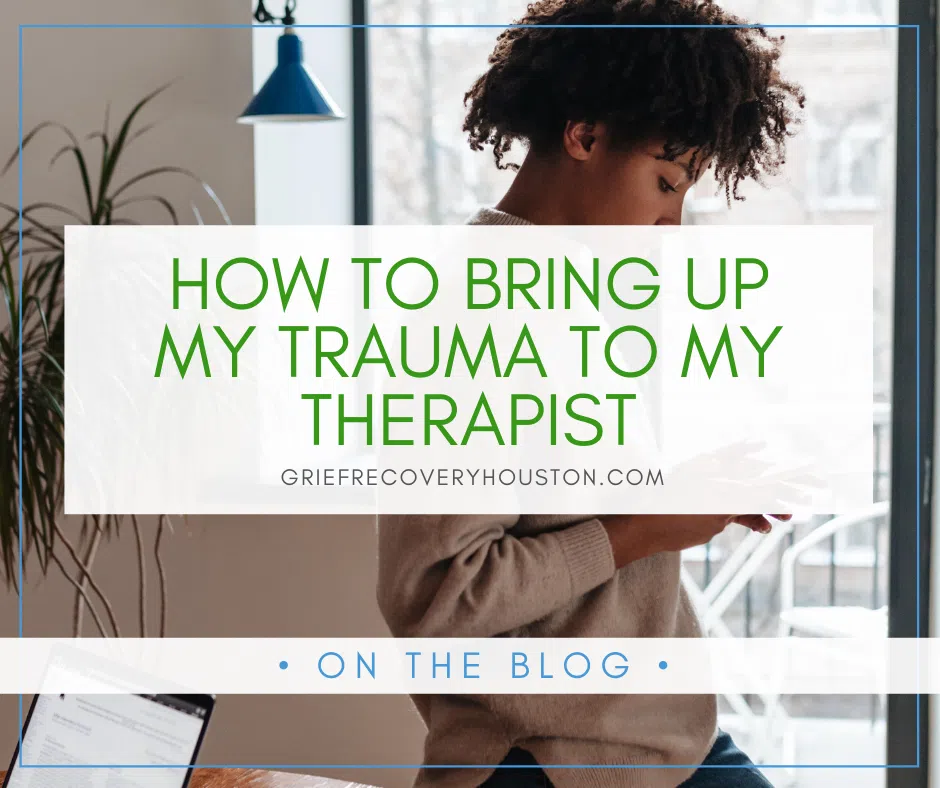- Unpacking Grief and Disability - July 8, 2024
- Breaking the Stigma: 5 Blogs to Better Understand Suicide - May 21, 2024
- 4 Tips for Better Sleep Hygiene - March 4, 2024
What is trauma?
We’ve talked about it a bit on our blog before, but to experience trauma is to live through a distressing event that creates long lasting pain or distress in our lives, which in turn can impact our ability to cope or function. Trauma is describing that emotional response to the event–the long lasting distress–not the event itself, which is why there are so many different possible triggers for people experiencing trauma.
 An event that is traumatic for one person may not be for another. While we think of things like natural disasters or violence when we think of trauma, these traumatic events are what is called “Big T” trauma. There is also “Little t” trauma, which is not nearly as widely understood, and in fact often goes unrecognized.
An event that is traumatic for one person may not be for another. While we think of things like natural disasters or violence when we think of trauma, these traumatic events are what is called “Big T” trauma. There is also “Little t” trauma, which is not nearly as widely understood, and in fact often goes unrecognized.
First, let’s look at Big T Trauma:
Big T Trauma is what you probably think of when you hear the word trauma, and it is the type of trauma that is most commonly associated with post traumatic stress disorder (PTSD). Events that can cause “Big T” Trauma include things like:
- Experiencing violence
- Witnessing violence
- Living through a natural disaster
- Life threatening events
- Witnessing a death
- Sexual violence
This kind of trauma is also an example of what is known as acute trauma. This is a trauma that comes from a singular traumatic event, rather than ongoing distress. Some common ways acute trauma can present include:
- heightened/excessive anxiety
- Inability to sleep through the night
- Increased + irrational sense of distrust
- Dissociation
- Feeling disconnected from surroundings
- Irritability
- Frequent confusion
- Increased aggression
So what is Little t trauma?
 Little t trauma is caused by distressing events that exceed our ability to cope or that disrupt our emotional functioning. They may not necessarily be life threatening or physically violent events, but they are often a series of ongoing, emotionally distressing situations–and in fact can actually cause more emotional harm than BigT Trauma if there’s repeated exposure. Some examples of little t trauma would be:
Little t trauma is caused by distressing events that exceed our ability to cope or that disrupt our emotional functioning. They may not necessarily be life threatening or physically violent events, but they are often a series of ongoing, emotionally distressing situations–and in fact can actually cause more emotional harm than BigT Trauma if there’s repeated exposure. Some examples of little t trauma would be:
- Emotional abuse
- Ongoing financial concerns
- Divorce
- Bullying
- Non-life threatening injuries
- Harassment
Little t trauma often results in what is known as chronic trauma. Particularly with experiences like emotional abuse, childhood bullying, and harassment as they are instances of repeated exposure to emotional distress, which is the definition of chronic trauma.
Some ways chronic trauma symptoms present include:
- Heightened anxiety
- Irritability
- Memory issues
- Trouble sleeping
- Fatigue
- Misperceptions of surroundings
- Increased rage
Little t trauma is often overlooked, and often a source of self shame. And people often do not even realize that they are experiencing trauma symptoms since they didn’t live through a “traumatic event.” But if you are experiencing any of the symptoms on the list above, you may be living with little t trauma.
There is another type of trauma: complex trauma, which is the result of exposure to multiple traumatic events, or a combination of both Big T and little t trauma.
If you need support navigating trauma, read more on how to find a trauma therapist here or contact us today and one of our trauma counselors can support you.






I’m so happy I found this article. I’ve been constantly invalidated for my traumatic little t traumatic events because I didn’t go through a big T traumatic event. My trauma was never seen as “bad”. I feel validated after reading this article. Thank you.
Very invalidating but usual in the medical community.